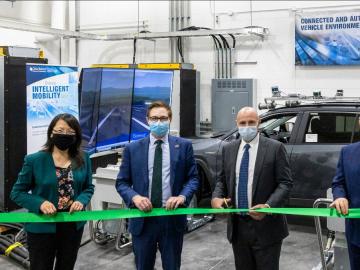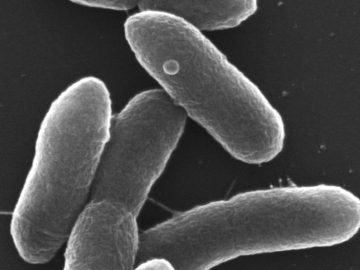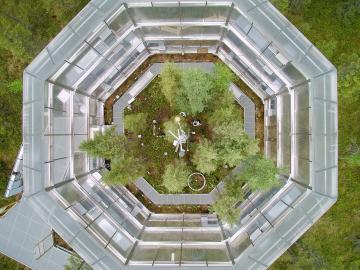
Filter News
Area of Research
- (-) Energy Science (83)
- (-) National Security (13)
- Biology and Environment (69)
- Biology and Soft Matter (1)
- Computational Biology (1)
- Computational Engineering (2)
- Computer Science (6)
- Electricity and Smart Grid (3)
- Energy Frontier Research Centers (1)
- Functional Materials for Energy (1)
- Fusion and Fission (3)
- Fusion Energy (1)
- Isotopes (1)
- Materials (67)
- Materials for Computing (16)
- Mathematics (1)
- Neutron Science (22)
- Quantum information Science (9)
- Sensors and Controls (1)
- Supercomputing (93)
News Topics
- (-) Biotechnology (5)
- (-) Grid (43)
- (-) Nanotechnology (9)
- (-) Polymers (11)
- (-) Quantum Science (3)
- (-) Summit (6)
- 3-D Printing/Advanced Manufacturing (81)
- Advanced Reactors (7)
- Artificial Intelligence (19)
- Big Data (11)
- Bioenergy (28)
- Biology (14)
- Biomedical (7)
- Buildings (38)
- Chemical Sciences (14)
- Clean Water (8)
- Composites (17)
- Computer Science (41)
- Coronavirus (14)
- Critical Materials (9)
- Cybersecurity (25)
- Energy Storage (71)
- Environment (59)
- Exascale Computing (2)
- Fossil Energy (2)
- Frontier (2)
- Fusion (2)
- High-Performance Computing (10)
- Hydropower (3)
- Isotopes (1)
- Machine Learning (18)
- Materials (36)
- Materials Science (29)
- Mathematics (2)
- Mercury (3)
- Microelectronics (1)
- Microscopy (8)
- Molten Salt (1)
- National Security (37)
- Neutron Science (15)
- Nuclear Energy (11)
- Partnerships (16)
- Physics (2)
- Security (15)
- Simulation (4)
- Space Exploration (3)
- Statistics (1)
- Transportation (68)
Media Contacts

ORNL and Department of Energy officials dedicated the launch of two clean energy research initiatives that focus on the recycling and recovery of advanced manufacturing materials and on connected and

ORNL scientists have modified a single microbe to simultaneously digest five of the most abundant components of lignocellulosic biomass, a big step forward in the development of a cost-effective biochemical conversion process to turn plants into

Oak Ridge National Laboratory scientists evaluating northern peatland responses to environmental change recorded extraordinary fine-root growth with increasing temperatures, indicating that this previously hidden belowground mechanism may play an important role in how carbon-rich peatlands respond to warming.

ORNL researchers have developed an intelligent power electronic inverter platform that can connect locally sited energy resources such as solar panels, energy storage and electric vehicles and smoothly interact with the utility power grid.

From materials science and earth system modeling to quantum information science and cybersecurity, experts in many fields run simulations and conduct experiments to collect the abundance of data necessary for scientific progress.

Scientists at Oak Ridge National Laboratory have demonstrated a direct relationship between climate warming and carbon loss in a peatland ecosystem.

Five researchers at the Department of Energy’s Oak Ridge National Laboratory have been named ORNL Corporate Fellows in recognition of significant career accomplishments and continued leadership in their scientific fields.

Scientists at ORNL used neutron scattering and supercomputing to better understand how an organic solvent and water work together to break down plant biomass, creating a pathway to significantly improve the production of renewable

Researchers at Oak Ridge National Laboratory developed a method that uses machine learning to predict seasonal fire risk in Africa, where half of the world’s wildfire-related carbon emissions originate.

Ada Sedova’s journey to Oak Ridge National Laboratory has taken her on the path from pre-med studies in college to an accelerated graduate career in mathematics and biophysics and now to the intersection of computational science and biology


